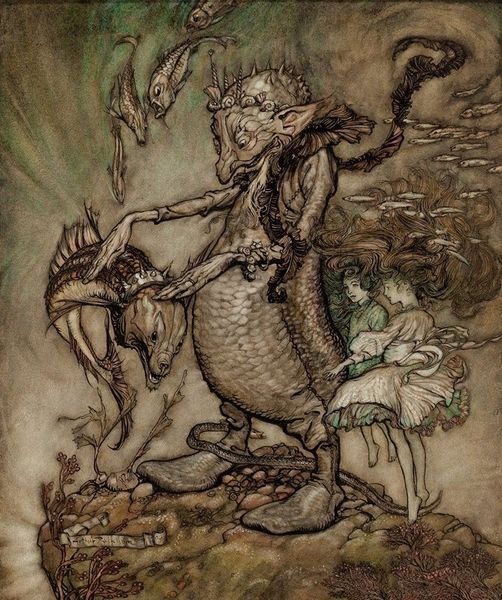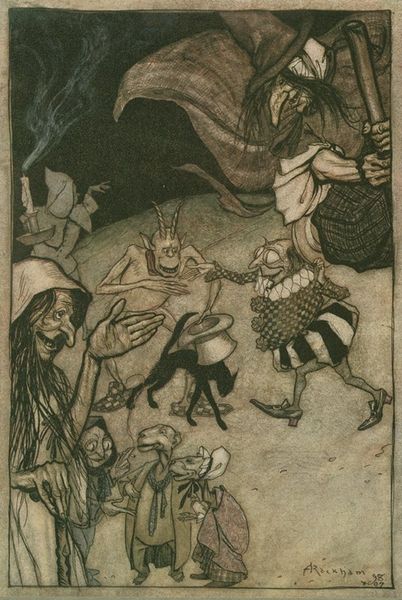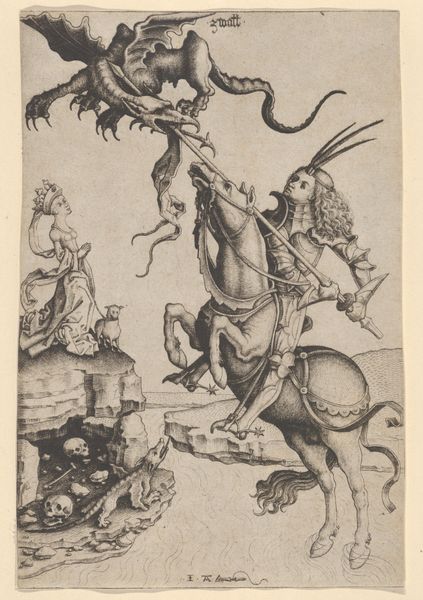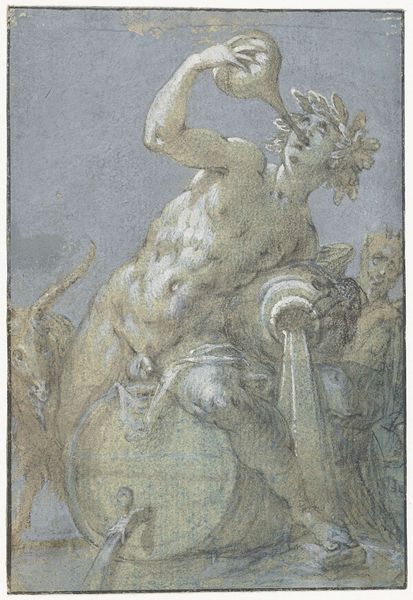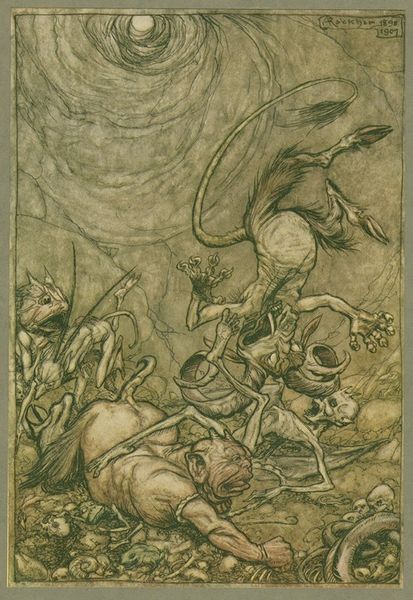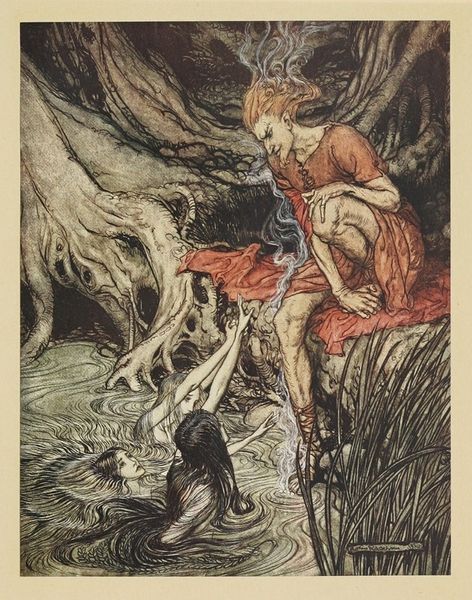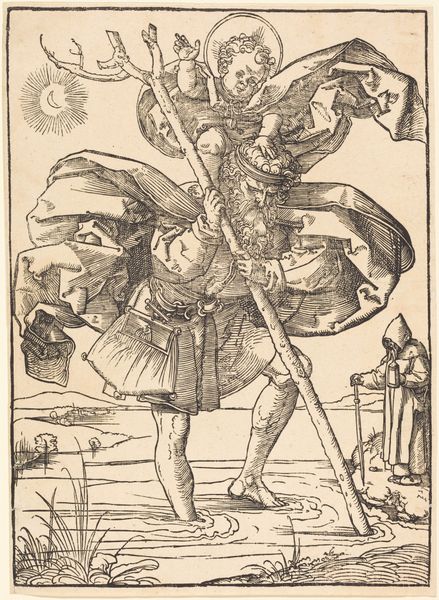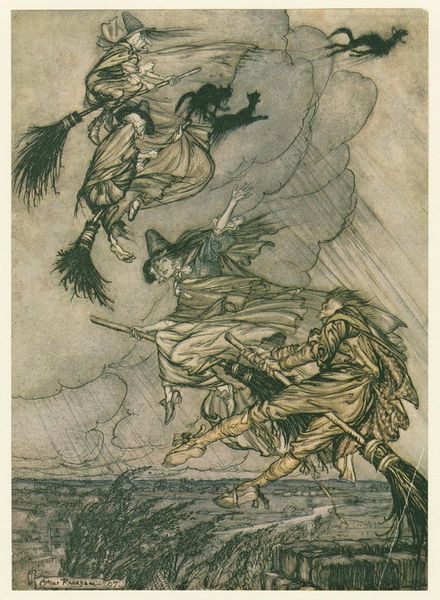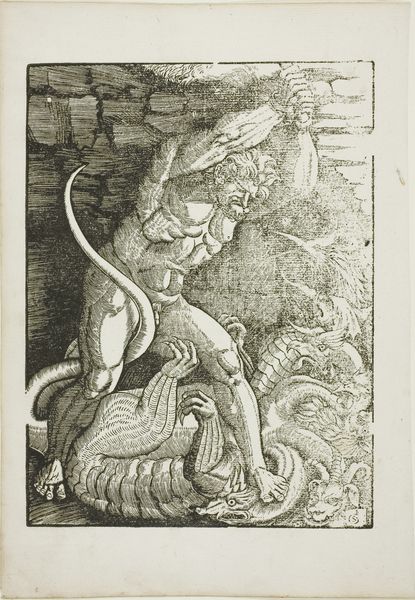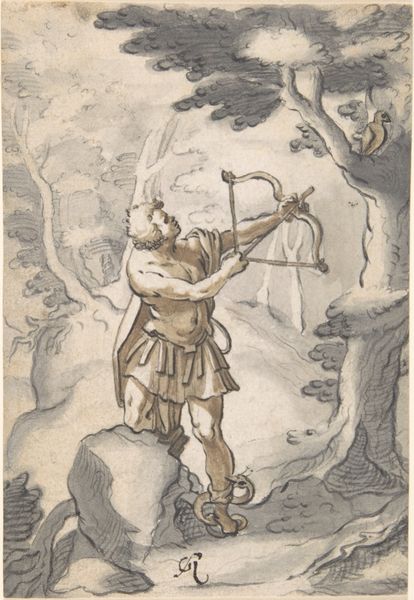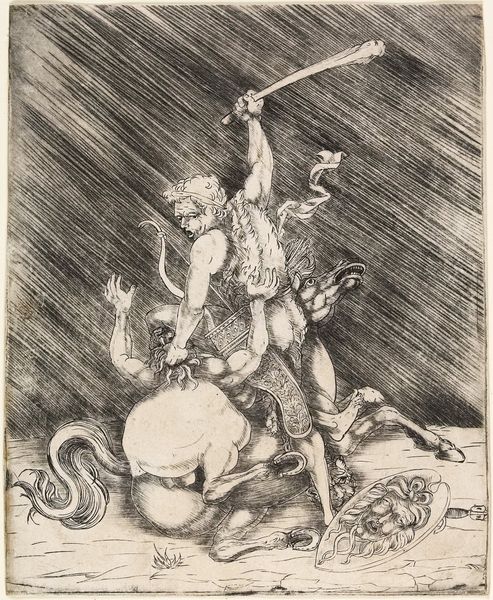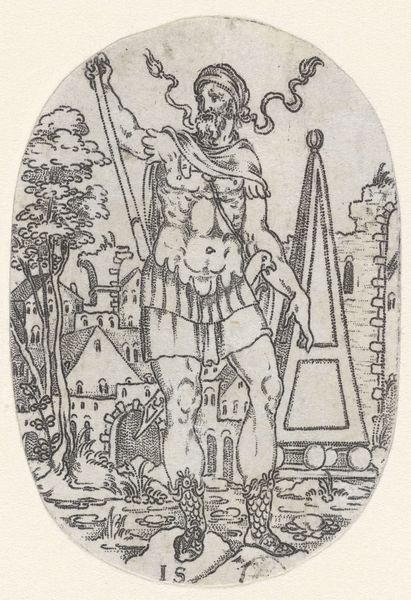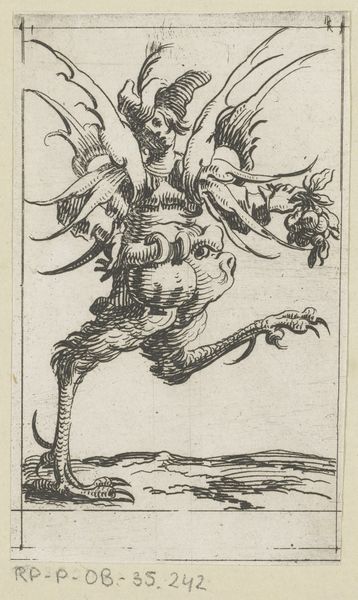
The horn, at the gate of the Barbican tower, was blown with a loud twenty-trumpeter power. 1911
0:00
0:00
drawing, ink
#
drawing
#
fantasy-art
#
figuration
#
ink
#
coloured pencil
#
symbolism
#
watercolour illustration
Copyright: Public Domain: Artvee
Curator: Looking at Arthur Rackham's 1911 drawing, “The horn, at the gate of the Barbican tower, was blown with a loud twenty-trumpeter power," I'm immediately struck by its unsettling yet whimsical tone. What do you think? Editor: It's undeniably intriguing. I see a real tension here, between the obvious fairy tale elements, the satyr-like figure blowing the horn, the dragon-like tail... and something darker, almost a challenge to traditional power structures lurking beneath the surface. Curator: Precisely. Rackham, drawing on influences of symbolism, often explored the undercurrents of society through the lens of folklore. Notice how the impish character's stance is aggressive. The horn seems to serve as a call to arms, but against whom? Editor: I find myself thinking about how illustrations, particularly in children’s books, can be used as propaganda, almost. What values are being promoted by casting *this* kind of character in the role of the noisemaker? And what message is being sent by placing him "at the gate?" Are we supposed to be inside the city, threatened? Or outside, rallying to get in? Curator: It's tempting to interpret that symbolically. Consider how fantasy has always served as a safe space for social critique. The hornblower could be seen as disrupting the status quo of the "Barbican tower"—perhaps a metaphor for existing hierarchies— with that “loud twenty-trumpeter power," it almost screams disruption! Editor: The way Rackham renders this fantastical setting also warrants attention. Look at the deliberate textures. He mixes ink, watercolor illustration, and colored pencil. This brings us to ponder his relationship with industry itself, illustrating for the masses… Curator: The materiality further enhances that tension you pointed out earlier. And to your point about industry, we also need to look into the Victorian era where fantasy illustration had a clear social standing that went with gender roles. We may never be certain of Rackham’s intent, but through analyses, we're invited to reconsider our own perspectives on what is ‘heroic’, ‘monstrous’, and where those lines blur within power dynamics. Editor: Indeed. Art challenges us not merely to observe, but to interrogate. "The horn, at the gate..." invites such inquiry.
Comments
No comments
Be the first to comment and join the conversation on the ultimate creative platform.
